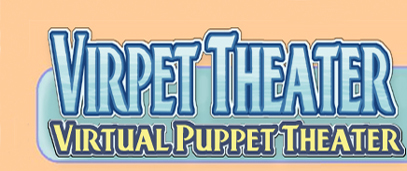MODELLING
PROCESS
UPDATES
Overview
for modeling and skeleton setup
Our
goal in making the digital replicas was to keep the puppets
as close to the originals as possible. The Viirpet Theatre operates
in a real-time interactive system. The content for the Virpet
Theater should be kept in “low polygon counts” and
“low texture memory” to allowthe engine to run smoothly.
For the quality of art content, it is mainly constrained by
the Lithtech engine's performance.
The
standard status of virtual puppets models
1. Most of the models have less than 2500 polycounts.
2. Texture map size is about 1024x1024 pixels for one character
3. Forward kinematics skeleton system.
PROCESS
Art
Work flow
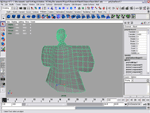
Modeling
Characters in Maya -----> export to 3dsmax for painting and
rigging----> Lithtech
We
use both Maya and Max, but the pipeline can be moved to Maya
only. To keep them in standard scale, we still use 3dsmax for
painting and rigging.
COMPARISON
OF MODELLING METHODS
3D
Scanner
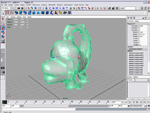
Advantage
1.
Exactly the same shape. As a result, it can possess a very high
level of detail.
2. Effective learning tool for 3d geometry
Disadvantage
1.
The 3dscanner in Art Institute Pittsburgh is too small for our
puppets.
2. Hard to get a good geometry structure for animation.
3. Limited access: not enough time to learn the process.
Using
pictures as references
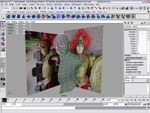
Advantage
1.
Full control of the geometry.
2. Easy to get photos.
Disadvantage
1.
Hard to get a really good shape. It depends on modeler or painter’s
ability.
SKELETON
SETUP
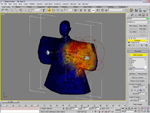
We
use 3dsmax for skeleton set up.
1.
In setting up the skeleton, it is assumed that the puppet will
be controlled by two joysticks. One joystick controls the upper
body, and the other controls position and arm movements.
2.
All the puppets have the same skeleton structures.
HANDOFF
TO FUTURE DEVELOPERS
1. Upgrade the engine for better performance and better skeleton
setup.
2. Try high polygon count model and bigger texture map.
3. More detailed movement and idle animations.
